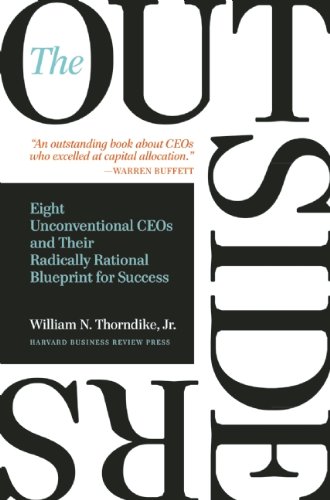

This article is an excerpt from the Shortform summary of "The Outsiders" by William N. Thorndike, Jr. Shortform has the world's best summaries of books you should be reading.
Like this article? Sign up for a free trial here .
Can a business get too big and lose focus? Can that negatively affect profits and share value? Bill Stiritz thought so, and moved swiftly to redefine the focus of Ralston Purina.
Ralston Purina was a consumer packaged goods company producing commercial animal feed, consumer pet food, and human foods. With Bill Stiritz, Ralston Purina CEO, the company defined its focus, and worked on acquisitions that fit their profile. In 2001, Ralston merged with Nestle in a transaction worth $10.4 billion. Read on to find out how Bill Stiritz redefined the company and increased its value.
Bill Stiritz: Data and Decisions
When Bill Stiritz joined as CEO in 1981, Ralston had a muddled focus (having purchased a hockey team and ski resort) and a stagnant stock price. Bill Stiritz revitalized the company with discipline, divesting unprofitable business units and acquiring new genuinely synergistic businesses.
Unlike other outsider CEOs, Bill Stiritz had been an insider at the company for over a decade. But he brought an unconventional plan that deviated from competitors. He knew that the consumer brands had attractive economics (high margins, low capital requirements), and focusing on this core would propel Ralston to new heights of profitability. When he became CEO in 1981, he implemented his plan decisively.
First, he sold the non-core businesses such as Jack in the Box, the hockey team, and the agricultural operations.
Then he made two large acquisitions—Continental Baking (including Twinkies and Wonder Bread) and Energizer Battery, totaling over $2.2 billion and 30% of Ralston’s market capitalization. Both businesses had languished under their previous owners, due to neglect or insufficient skillset.
Under Bill Stiritz, Ralston Purina quickly improved its performance by improving marketing (launching the Energizer bunny campaign), improving distribution, launching new product lines, and reducing costs. Over their lifetime at the company, Energizer would generate 21% annualized returns, and Continental 13%.
Analytical Approach
Bill Stiritz took a quantitative approach to management. A poker player in his youth, he saw capital allocation like poker—read the table, calculate odds, and know when to bet big when you’re likely to win. He would use his quantitative approach in capital allocation, such as deciding between repurchasing shares and conducting an acquisition, based on return on investment.
He saw analysis as critical to independent thinking, particularly in the CEO position. He felt that CEOs who lacked an analytical mindset (for instance, if they came from areas like marketing or legal) were handicapped in their role.
Focus on Core
Bill Stiritz’s first focus was on improving the high-margin, low-capital-requirement consumer businesses. He exited businesses that were once critical but had become commoditized, such as agricultural feed, while reinvesting in its key consumer brands.
This generated cash flow to use to raise debt, buy back stock, and make acquisitions.
Use of Debt
Bill Stiritz was fond of using leverage to achieve higher returns on equity. This followed the leveraged buyout practices of private equity firms, but it was an unorthodox move for packaged goods companies, which preferred having conservative balance sheets. Over his tenure, he kept an average debt-to-cash flow ratio of 2.6, compared to 1.7 for his competitors.
Share Repurchases
Buying back shares was controversial in the 1980s, since it meant shrinking the company or admitting that there were no worthwhile investments to make. Instead, Bill Stiritz used buybacks as a yardstick for return on investment—if an acquisition or internal investment could beat the return on buying back shares, it was worth doing. As with other outsider CEOs, most shares were purchased when company stock was at low P/E ratios.
Acquisition Strategy
Bill Stiritz focused on companies that could be reinvigorated by Ralston’s expertise in marketing, product development, and distribution. He liked companies that had been neglected by their previous owners, such as Continental Baking and Energizer.
When purchasing companies, Stiritz preferred to negotiate through direct contact, not with investment bankers, whom he considered parasitic. He would often show up alone to meetings where the opposition was staffed with a row of advisers.
Unconventional Financial Analysis
Like Malone at TCI, Bill Stiritz, Ralston Purina CEO, rejected the conventional metrics of the day, such as reported earnings and book value. Instead, he focused on more meaningful metrics like EBITDA and internal rate of return, both of which had gained early acceptance among private equity investors.
CEO Bill Stiritz built Ralston Purina by sticking to its core business identity, and sticking strictly to data and numbers. Through his data-driven approach, Stiritz increased the value of the company, leading to the famed Nestle merger.

———End of Preview———
Like what you just read? Read the rest of the world's best summary of William N. Thorndike, Jr's "The Outsiders" at Shortform .
Here's what you'll find in our full The Outsiders summary :
- What great CEOs like Warren Buffett do that average CEOs don't
- How to master the art of capital allocation
- How to be a great manager that your team is excited to work with






